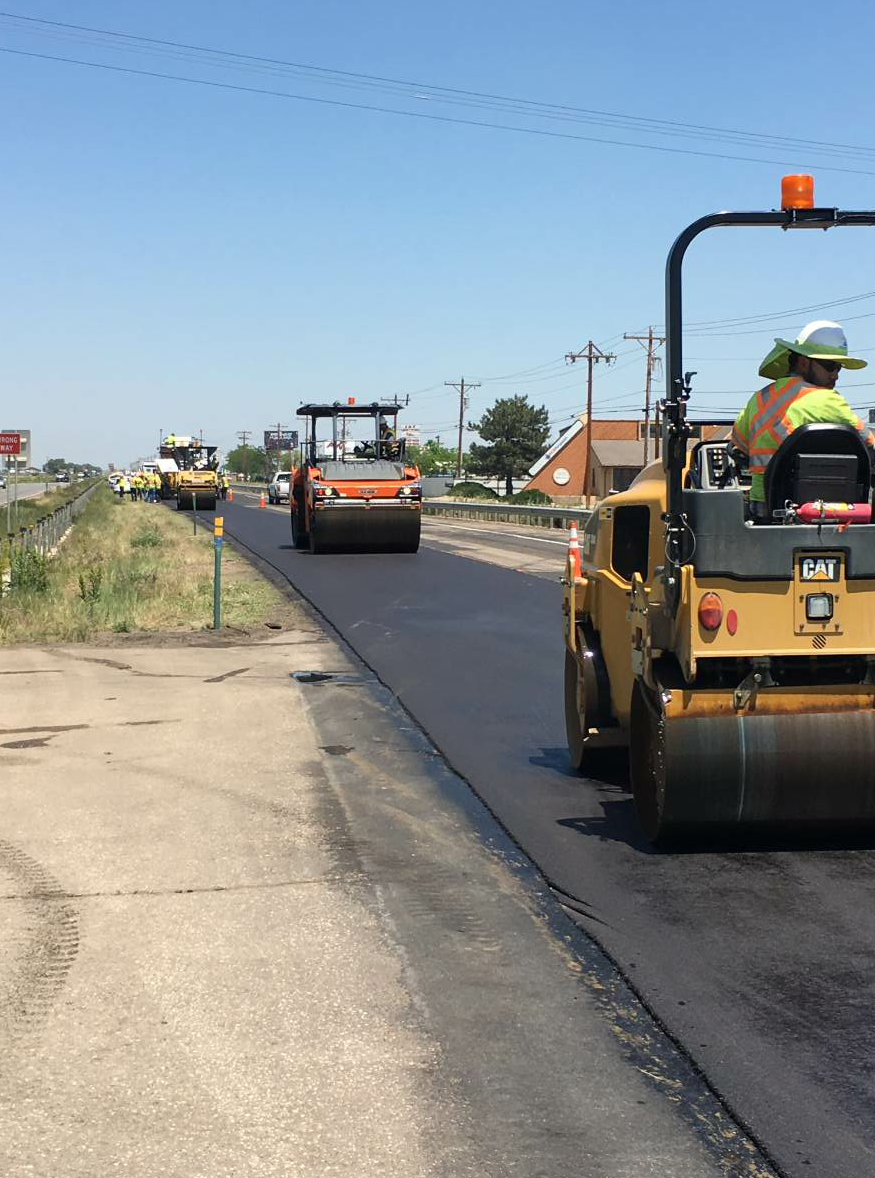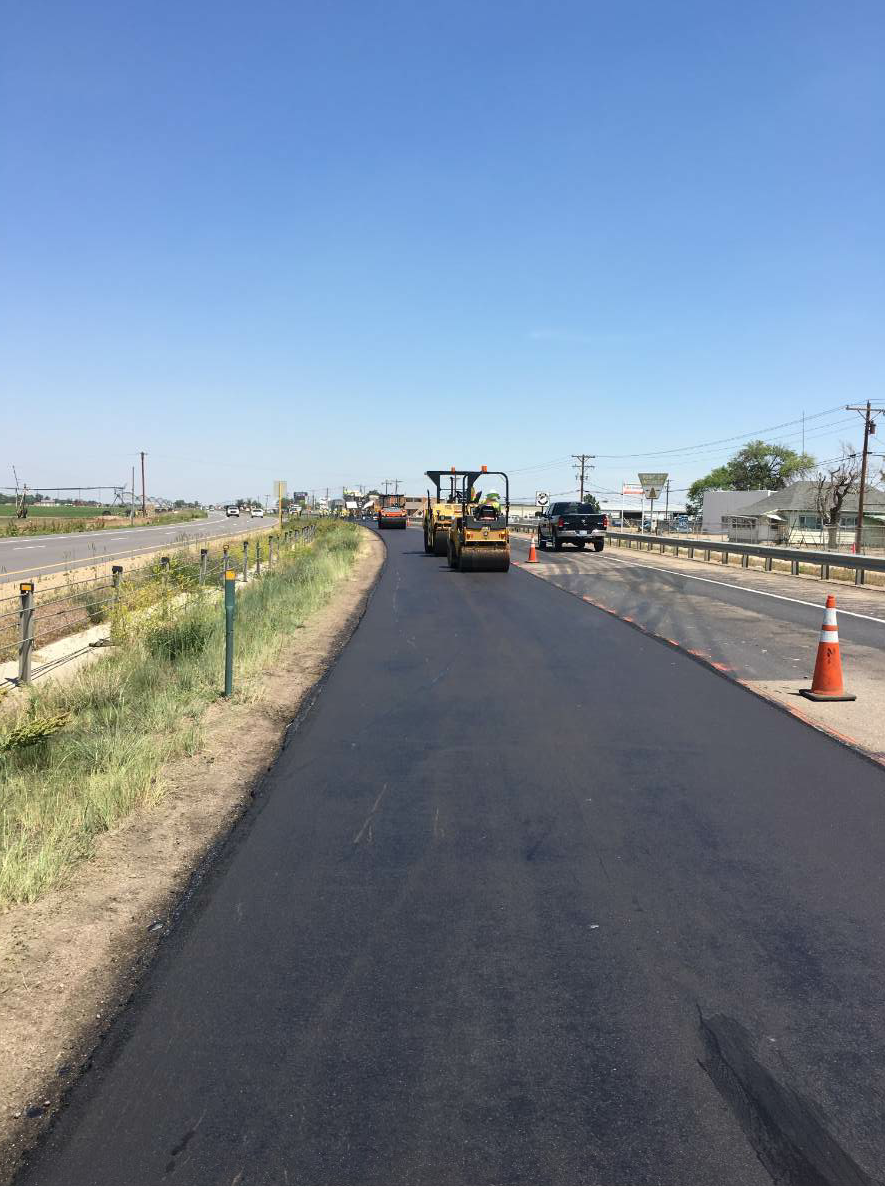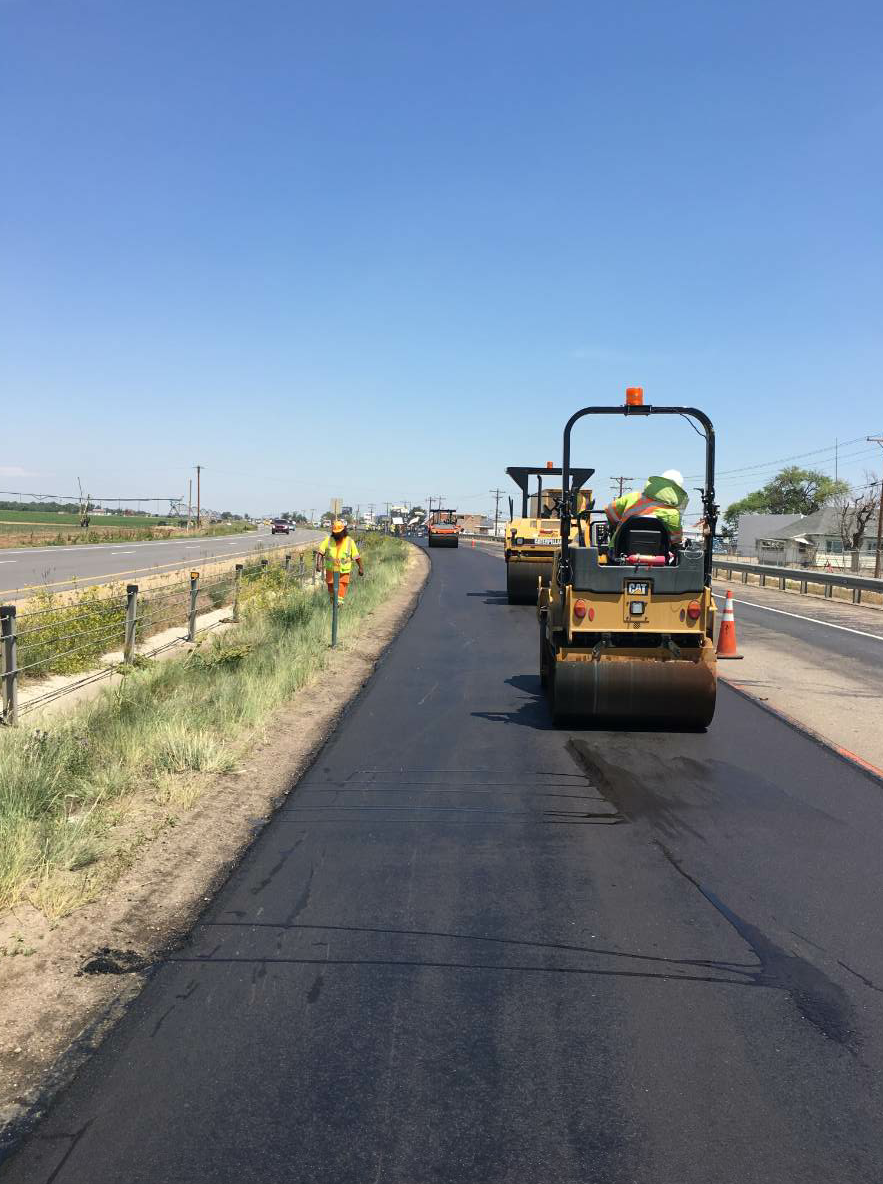RCI Proves Itself on the Pavement for Aggregate Industries
BY AsphaltPro Staff

We all know that when roadways age they tend to crack. What we may not know, though, is exactly how to apply a solution to that problem that’ll last for more than a year or two.
“If you place a new lift of asphalt pavement on top of concrete or asphalt that is already cracked, what happens is that the reflective crack comes up through the asphalt you just paved very rapidly,” said John Cheever, QC Manager for Aggregate Industries in Colorado.
In this situation, he adds, you typically see one inch of cracking per year. For example, if you put 2 or 3 inches of asphalt on top of cracked concrete, you’re going to see cracks in two or three years. Sometimes it can be faster than that, but that’s a general rule of thumb, Cheever said.

CDOT uses RCI for moderate longitudinal, transverse and reflective cracking.
Despite those realities, there are options. One option is rubbilization, where you shatter the concrete roadway so the distress is spread out and then pave with asphalt over the top of it. However, this process can be very expensive.
Another option is to use a reflective crack interlayer mix, also known as an RCI mix. RCI can be used to rehab and protect distressed Portland cement concrete and asphalt concrete pavements using a highly elastic impermeable hot mix interlayer and a polymer modified hot-mix overlay.
Typically, asphalt pavements have around 5 percent asphalt cement binder in the mixture. RCI mixes in Colorado, though, have around 9 percent asphalt cement. RCI mixes are also very sandy and fine and don’t contain any course aggregate. They’re also only placed one inch thick, unlike other mixes.
 The extra polymer in the asphalt binder of an RCI mix can significantly delay cracking, Cheever said. “Then, when the crack does reflect through the top lift of asphalt, it’s offset such that if water gets into the new crack it doesn’t make it through the interlayer and into the subgrade.”
The extra polymer in the asphalt binder of an RCI mix can significantly delay cracking, Cheever said. “Then, when the crack does reflect through the top lift of asphalt, it’s offset such that if water gets into the new crack it doesn’t make it through the interlayer and into the subgrade.”
“It’s a combination of the dynamic loading and the properties of that material,” said Gary DeWitt, Region 4 Materials Engineer for the Colorado Department of Transportation. “When the crack occurs in the future–we’ve seen them about six years after placement–it’s offset by 6 inches to a foot.”
DeWitt adds that on sections where CDOT applied RCI, the cracks that have come through are narrower and less likely to spall. “From what we can see, RCI maintains the road’s structure longer than non-RCI, so it’s performing well.”
When RCI Works Best

The paving process for RCI projects is quite similar to any other job. However, the higher asphalt binder content of the hot mix does make it a bit stickier and more difficult to work by hand.
Cheever has worked for Aggregate Industries–a LafargeHolcim company–for about 25 years and has completed four of the six RCI projects in Colorado over the past decade or so. Aggregate Industries has six asphalt plants in Colorado and four paving crews in the Colorado Front Range area.
On Cheever’s very first RCI project, the crew paved a control section where they didn’t use RCI and that portion cracked in less than a year. The latest RCI project in Colorado was two lanes wide and four miles long, for a total of eight lane miles and took about one week to complete.
“Two years prior, Aggregate Industries applied RCI on the roadway section just south of the one it most recently completed on US 85 between Brighton and Greeley,” Cheever said.

Cheever said one of the most significant differences when performing an RCI is to keep the rollers right behind the paver to compact the thin layer of mix before it cools. He estimates the rollers should stay within 150 feet of the paver.
For the most recent project, Aggregate Industries milled off and recycled the old asphalt before laying one inch of the RCI.
The Colorado DOT requires that the RCI be compacted to a minimum of at least 94 percent of the Maximum Theoretical Specific Gravity. This requires that three large rollers be used in a tight rolling pattern so compaction is obtained very rapidly, before the one-inch-thick mat cools. Then, the RCI is covered with 3 inches of a half-inch nominal mix design.
“That’s a perpetual pavement approach where, in the future as that top lift wears, you can come in and remove and replace the top lift but leave the RCI layer alone.” Cheever said.

Aggregate Industries’ most recent RCI job included a one-inch RCI covered with 3 inches of a half nominal mix design.
Despite the benefits of RCI, it’s still a relatively new solution, primarily because it needs to be used to correct the right set of parameters.
“RCI is still in its infancy, but we like to use it in certain applications, where there’s a distressed road with existing cracking,” DeWitt said. CDOT completed its first RCI project about 10 years ago.
“We had a concrete road with an HMA overlay and widened HMA section that was about 60 years old,” DeWitt said, “with a longitudinal crack over the HMA/concrete interface that we wanted to stop from propagating to the upper layers. That’s what first got us interested in RCI.”

After 10 years, that crack still hasn’t propagated through, DeWitt said. CDOT uses the application for longitudinal, transverse and reflective cracking.

“RCI is a good tool to have in your toolbox,” Cheever said.
RCI, Done Right

Due to the higher percentage of asphalt binder, RCI mixes are often more expensive than other mixes. However, according to Cheever and DeWitt, the process offsets and delays cracking by about 6 inches and 6 years.
Placing an RCI mixture isn’t very different from any other paving practice–it’s mixed, transported, placed and compacted using standard equipment. However, here are some best practices to follow.
It’s recommended that any areas with high-severity punch-outs, blow-ups, and severe distress, as listed in the Distress Identification Manual for the Long-Term Pavement Performance Project, should be repaired by a doweled, full-depth patch. Any surface deformities 3 inches or deeper or 4 feet or wider should be filled with hot mix prior to the RCI, but small deformities like pop-outs and spalls can be filled with the bituminous interlayer mixture while its placed.
If its determined that joints or cracks should be sealed prior to performing the RCI, ASTM non-expansive crackfiller joint material should be used, as they are less vulnerable to the heat of hot-mix applied on top of them. It’s important to note that soft crack fillers can cause temporary swelling in the strata interlayer. If this happens, the affected areas should be re-rolled within one hour of initial paving. In the future, a non-expansive crack filler should be used instead and overbanding should be removed.

Prior to the RCI, the surface should be level so the interlayer can be paved uniformly one inch thick. And, you should always tack prior to placing the RCI mix.
RCI mixtures should be laid between 280 and 340 degrees, depending on what binder was used. Cheever suggests keeping the three rollers right behind the paver to compact the thin layer of mix before it cools. He estimates the rollers should stay within 150 feet of the paver.
It’s also extremely important to use release agents when working with RCI mixes–at the plant, on the paver, in the haul truck, and on your tools.

“We put a fabric softener like Downy in the water of our rollers so the binder doesn’t stick to the drums,” Cheever said. “We also place Downy in the water of our high speed core rig that is used to take cores to measure the compaction of the roadway. Care has to be taken that the one inch thick cores are not deformed or the compaction results can be affected.” One or two cups per tank of water should work well to prevent sticking.
Cheever also recommends using a Material Transfer Vehicle. “We had smoothness specs on the job, so once we started paving, we didn’t want to stop,” Cheever said.
DeWitt adds that, with the extra binder, the material might also be more difficult to work by hand. It’s very important to follow temperature guidelines to avoid this issue.
Despite a few special considerations, Cheever and DeWitt are sold on RCI–given the right project parameters. “Like always, project selection is critical,” DeWitt said. “If it’s too severe, there are other applications out there. But, if it’s in the moderate range, RCI might be the best answer.”
